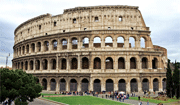As head of the Holy Roman Empire from 1194 to 1250, the colorful and accomplished Frederick II inspired both devotion and derision, but as a patron of the arts he was a savvy and image-conscious leader—and in all probability a prime force behind the beginnings of the Italian Renaissance.
Art historian Louisa Woodville tells how Frederick directed the artists of his court in Palermo to recreate the splendor of ancient Rome, encouraging them to go beyond the then-popular Byzantine style and look to Roman sculpture for prototypes. As a result, he fostered a magnificent revival of classically inspired art—and his own imperial image (in every sense) as an heir to the Caesars got a very public boost. After Frederick died, his artists moved north to Pisa, Florence, Siena, and beyond, directly influencing artists like Giotto and others who ushered in the Renaissance.
Why don’t we know more about the art in Frederick’s court? Because much of it was scattered or destroyed after his death. But when those works that did survive are juxtaposed with those of the proto-Renaissance, the case for Frederick sparking one of art’s most famous and fertile eras is made.
Woodville teaches art history at George Mason University.
Other Connections
 Experience the Highlights of Italy from the Amalfi Coast, to Rome, Florence, and Venice.
Experience the Highlights of Italy from the Amalfi Coast, to Rome, Florence, and Venice.
Visit the Smithsonian Journeys page to see more
European trips.